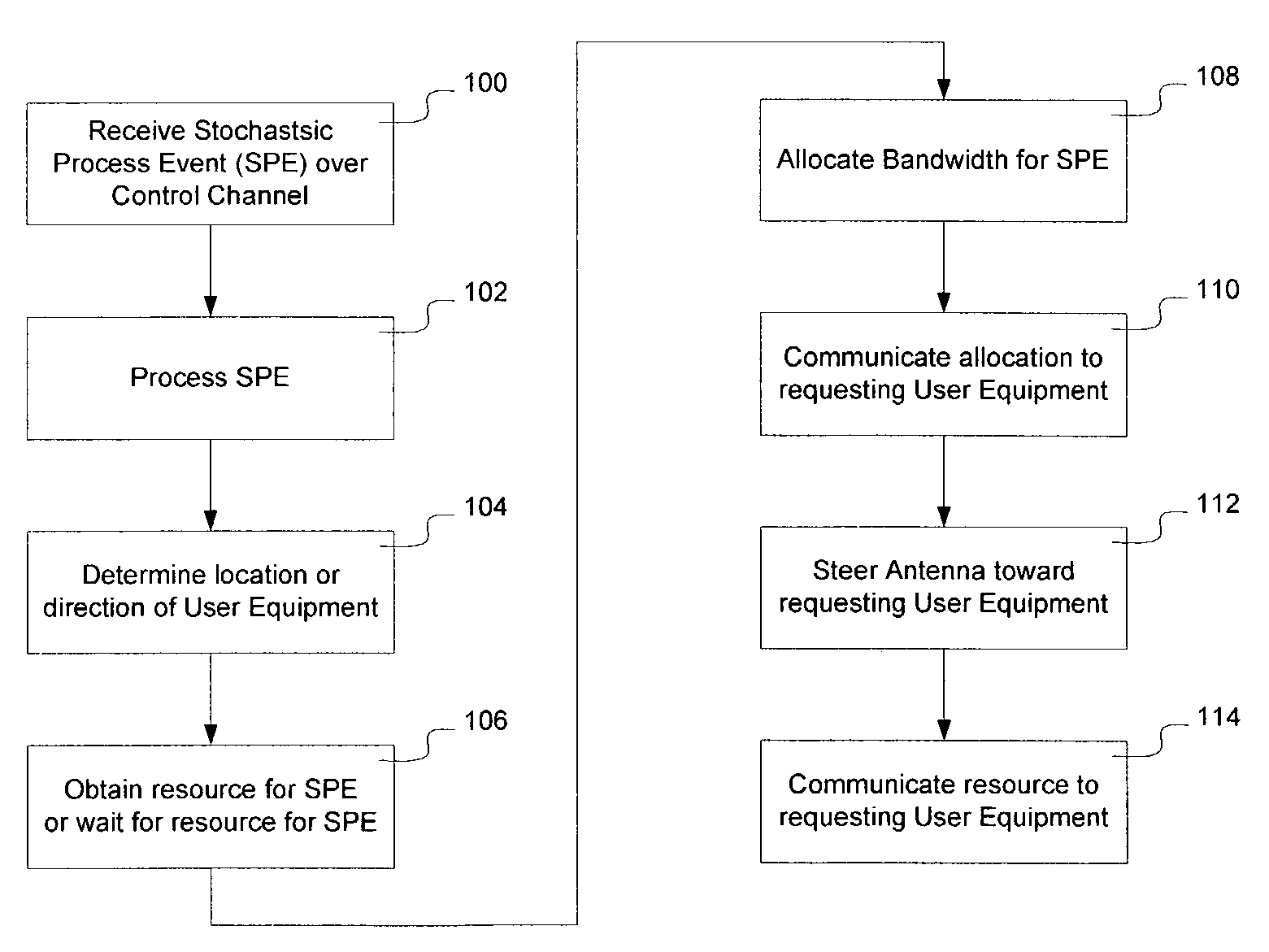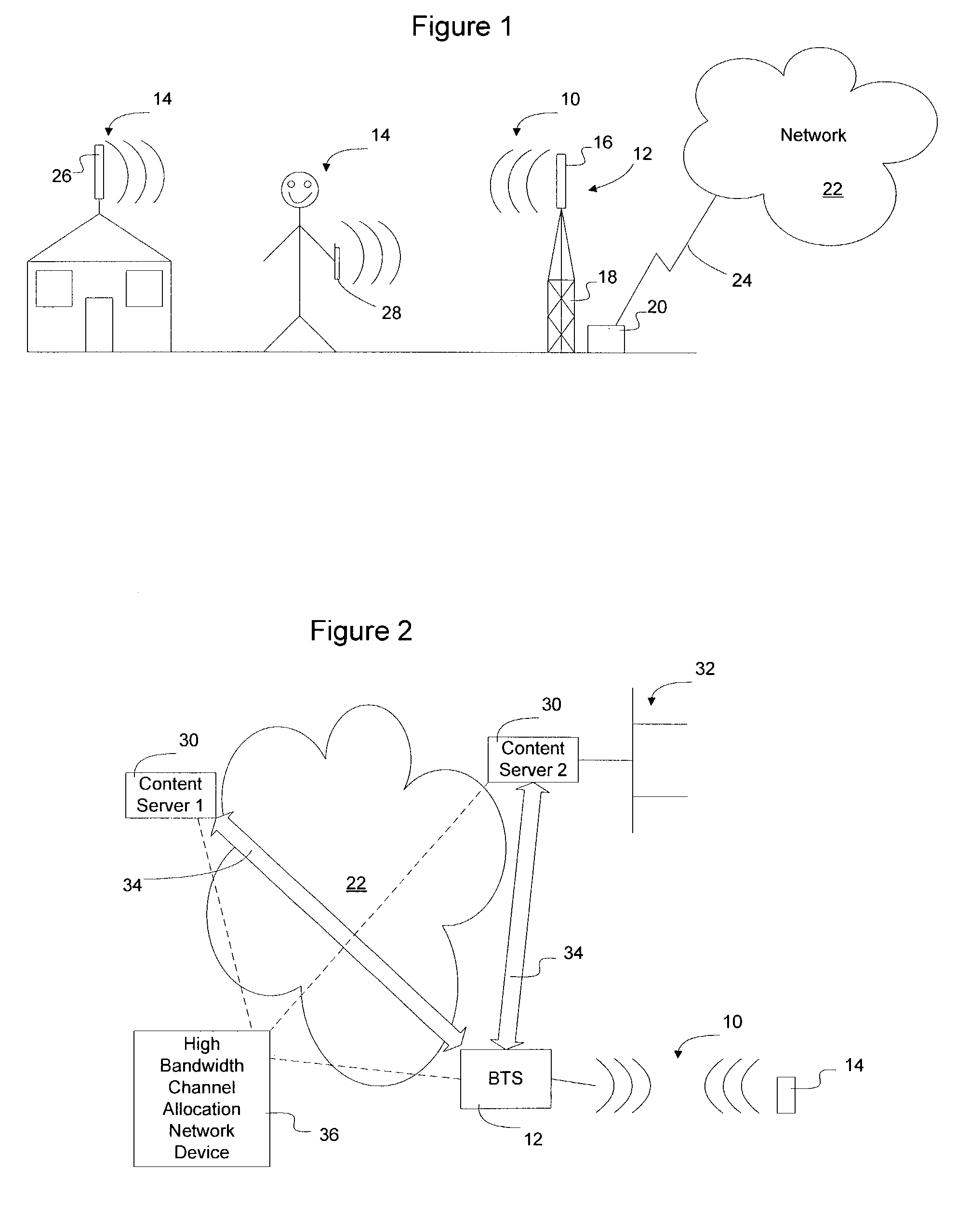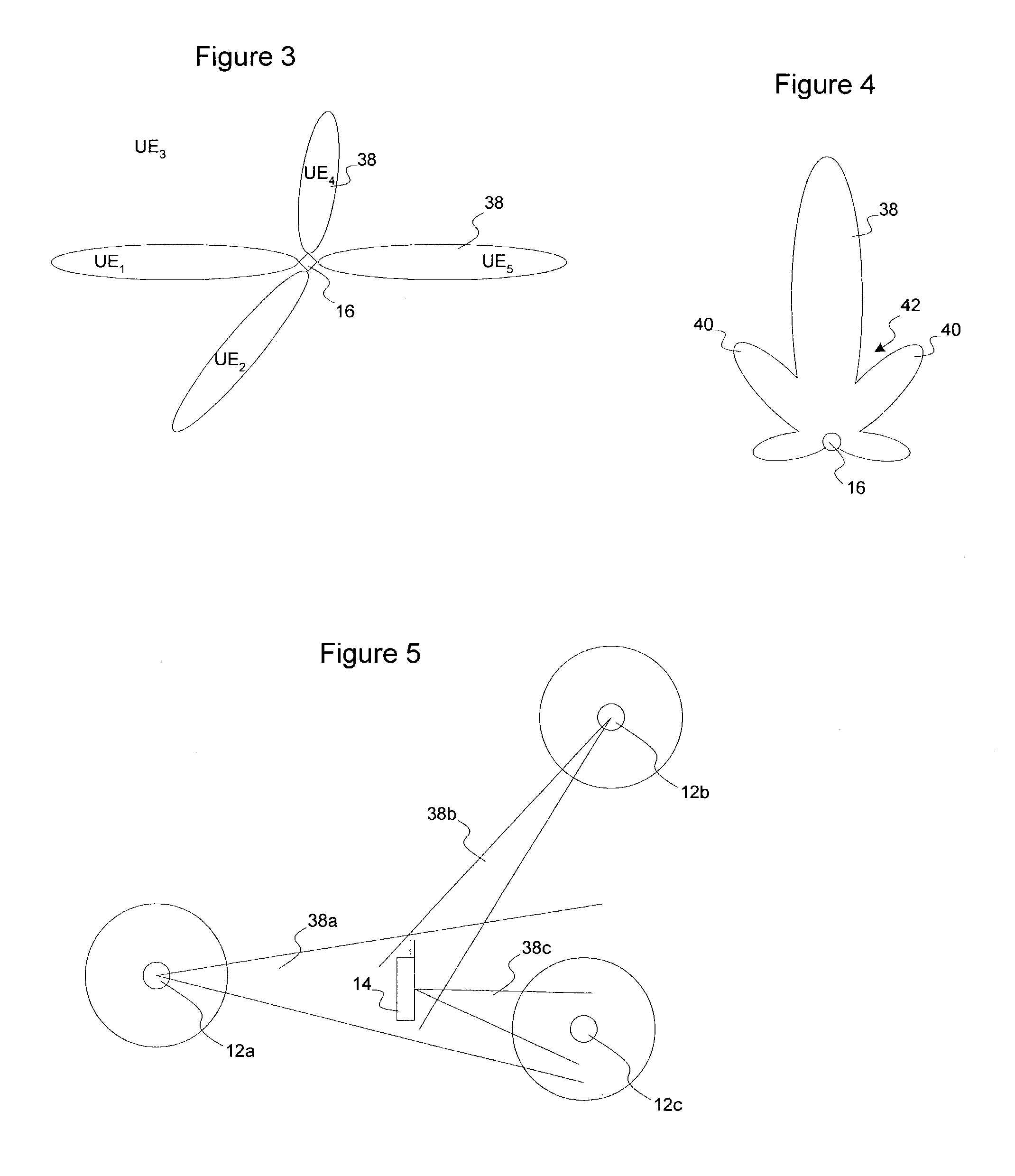Method and apparatus for directional transmission of high bandwidth traffic on a wireless network
a wireless network and traffic technology, applied in the field of high-bandwidth wireless communications, can solve the problems of low average data rate, inability to optimize gsm and is-95a for data transmission, and inability to meet the increasing bandwidth demand of existing deployed technology base, so as to improve signal noise and signal interference ratio, reduce latency, and minimize interference. the effect of transmission
- Summary
- Abstract
- Description
- Claims
- Application Information
AI Technical Summary
Benefits of technology
Problems solved by technology
Method used
Image
Examples
embodiments
[0075]FIG. 1 illustrates one embodiment of a wireless communications network configured to implement embodiments of the invention. As illustrated in FIG. 1, a wireless network 10 is formed by transmitting signals between a base transceiver station (BTS) 12 and user equipment network devices (UEs) 14. The BTS 12 may include various equipment, such as an antenna 16 on a tower 18, and a network device 20 configured to perform functions associated with passing information between the wireless network 10 and other telecommunications networks 22 (such as the Internet). The BTS 12 may be linked with the telecommunications networks 22 via an optical, electrical, wireless, or other link 24. The antenna 16 may be a directional antenna, such as an antenna array, configured to operate in any conventional manner.
[0076]User Equipment network device (UE) 14 may be associated with a fixed location 26, such as a wireless modem connected to a computer in a residence, or may be associated with a mobil...
example 1
ng file
[0117]Assume, in this example, that an user wishes to download a resource from the Internet, such as a file stored on a server on the Internet. The user, in this example, sends a request via the control channel to the HBCA requesting the file. The HBCA determines the location and / or direction of the requesting user, obtains the file, determines the size of the file, the transmission priority, and class of service. The HBCA then allocates access slots on the data channel to place the file in line for transmission to the requesting user.
[0118]The HBCA advises the user, on the control channel, of the amount of delay before the download will commence, the download duration, and other pertinent information, such as the cost of the download, and optionally may provide the user with the ability to confirm or cancel the download. The HBCA then provides direction information to the antenna and causes the download to commence in the direction of the requesting user in the allocated acc...
example 2
ephony
[0119]Assume, in this example, that a wireless user wishes to initiate a video telephone call (either one way or bi-directional). In this instance, using embodiments of the present invention, the user communicates its request to the HBCA via the control channel. The HBCA determines the direction information associated with the requesting user and checks the availability of the data channel. If the data channel is not available, it will notify the requesting network device via the control channel that it is not possible to make a video telephone call at this time. If the data channel is available, the HBCA will allocate sufficient access slots indefinitely on a one-out-of-every-n basis and will communicate to the requesting user information sufficient to enable the video call to be set up via the control channel. The HBCA will then associate the direction information with the access slots to enable the antenna to direct the high speed data channel toward the intended recipient ...
PUM
 Login to View More
Login to View More Abstract
Description
Claims
Application Information
 Login to View More
Login to View More - R&D
- Intellectual Property
- Life Sciences
- Materials
- Tech Scout
- Unparalleled Data Quality
- Higher Quality Content
- 60% Fewer Hallucinations
Browse by: Latest US Patents, China's latest patents, Technical Efficacy Thesaurus, Application Domain, Technology Topic, Popular Technical Reports.
© 2025 PatSnap. All rights reserved.Legal|Privacy policy|Modern Slavery Act Transparency Statement|Sitemap|About US| Contact US: help@patsnap.com



